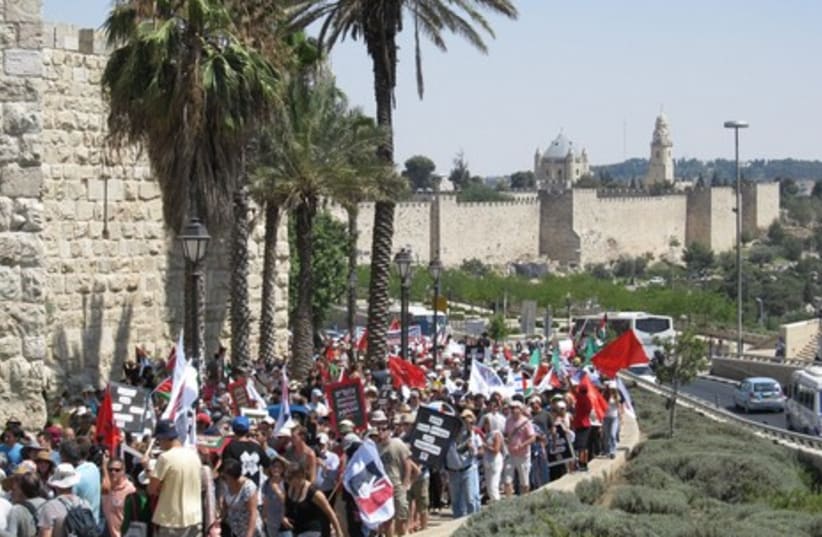
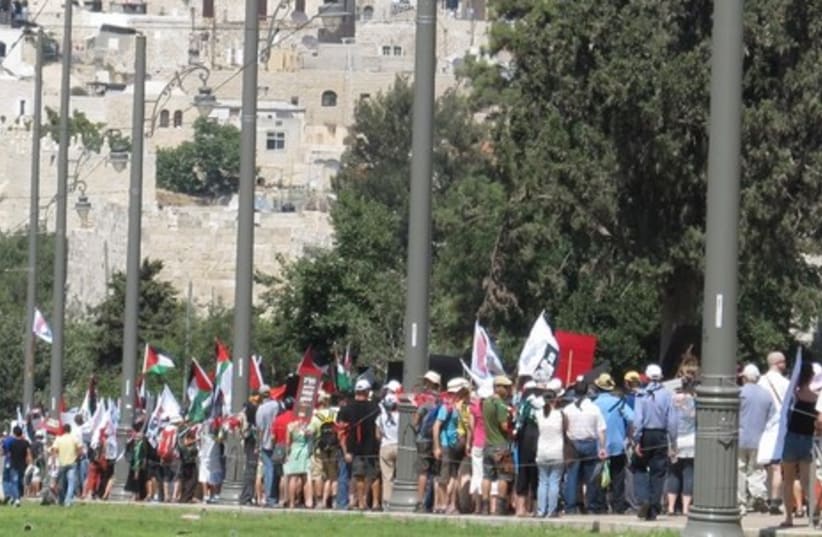
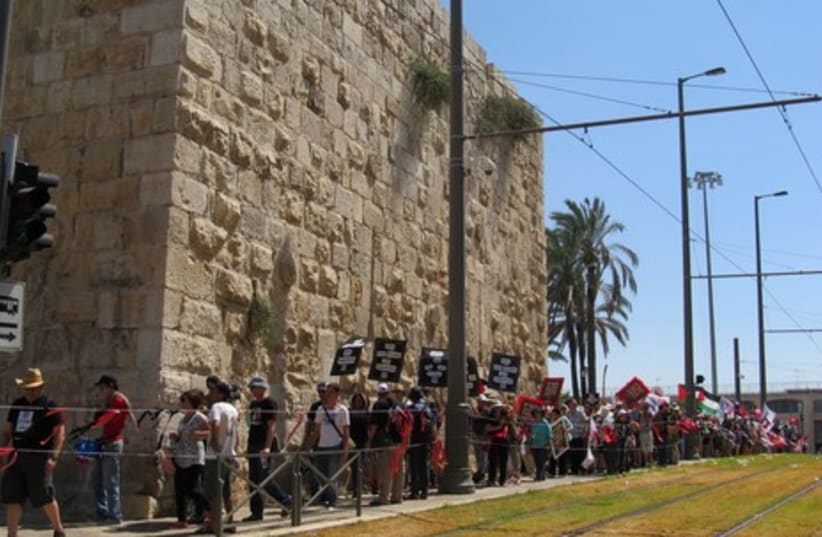
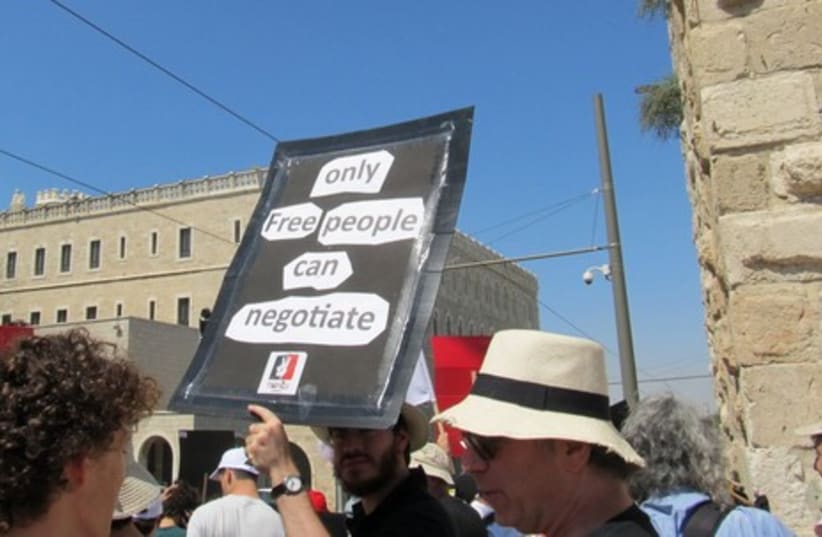
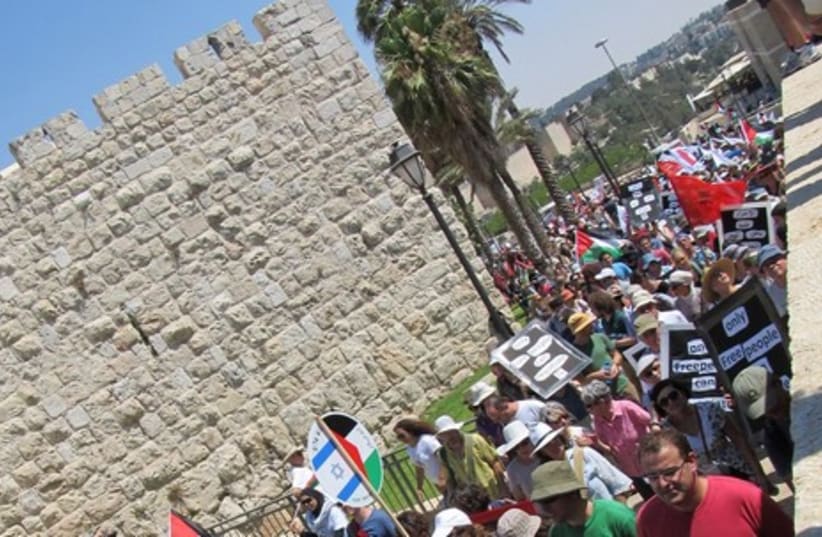
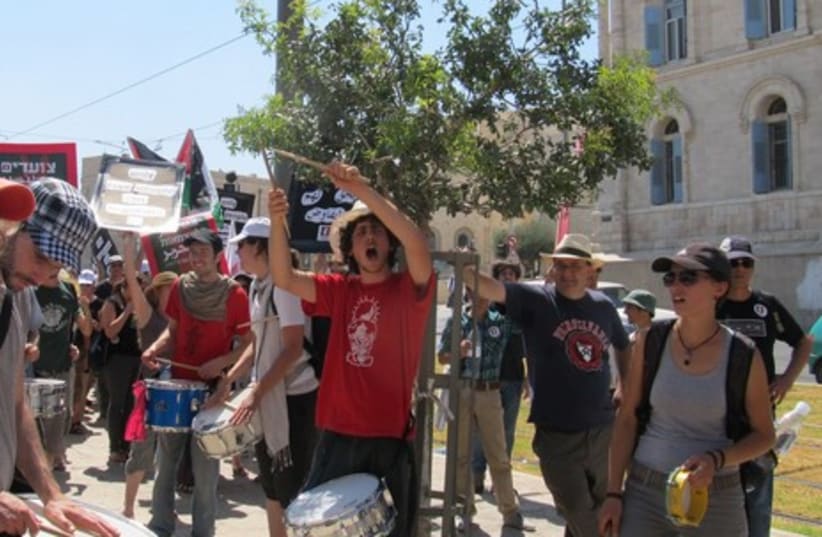
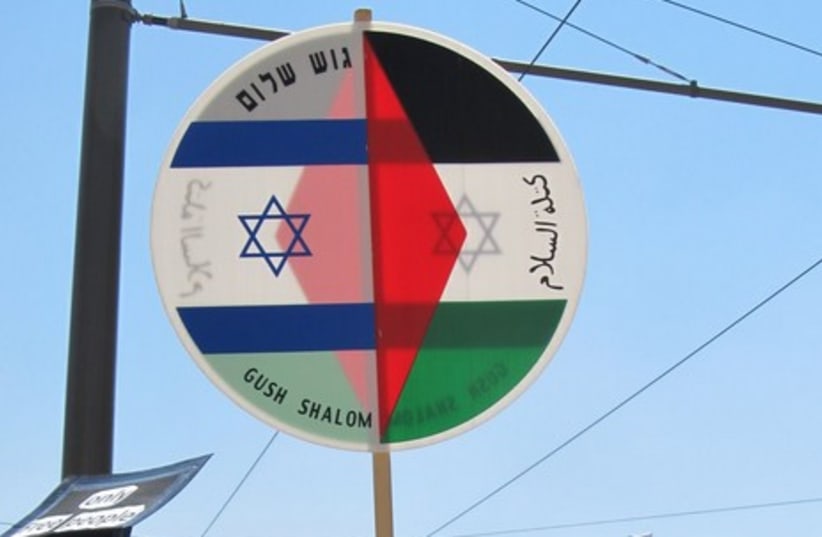

Under the banner of “Independence for Palestine,” the march, which was organized by the Sheikh Jarrah Solidarity Movement, drew 4,500 participants from across the country.
RELATED:6 in 10 Palestinians reject 2-state solution, survey findsPA to Quartet: Tell Israel to stop building over Green LineThey started from Jaffa Gate and ended at the weekly protest in the Sheikh Jarrah neighborhood, taking a route the reverse of the Flag March held each Jerusalem Day to mark the reunification of the city in June 1967. March organizers said the route was also chosen because it follows the “border” between east and west Jerusalem.Palestinian and Israeli flags fluttered in the breeze as activists young and old carried signs that said “Only free people can negotiate” and “67,” signifying a return to the June 4, 1967, armistice lines. MKs Zehava Galon (Meretz) and Dov Henin (Hadash) joined the march.Arab youth groups from Lod, Jaffa and Nazareth also took part, in addition to all of the popular committees from the east Jerusalem neighborhoods.“I really believe, in the most democratic way possible, that we must exercise our rights,” said Mahmoud, the leader of the Jaffa chapter of Palestinian Rights Within Israel.The march was part of a series of actions expressing support for a Palestinian bid for statehood in the UN in September.“I’m not optimistic [about September],” said Pessah, an 88-year-old professor of Jewish studies who marched along with his daughter. “I’m taking part to show there are different opinions... I see it as a positive thing that there are people who think differently, who want the country to be different than it is now. Even though it’s not easy for me, I came to show that Palestinians need their own state,” he said.The march took place peacefully.“We’re very happy, there were more people than we expected,” said Dolev Rahat, a 26-year-old Sheikh Jarrah activist from Jerusalem. He said the biggest problem was keeping the demonstrators off the light rail track, in accordance with an agreement the activists made with the police.Some people watching the march were skeptical it would make things better.“I don’t think this helps, why would it?” asked Fuzi, a 40-year-old Arab shuttle driver from the Old City who drank coffee with his friends while watching the march pass Damascus Gate. He said he was more concerned with the high cost of food and apartments, and with making ends meet for his family. “This is a different war, we have our own real war,” he said. “I don’t have anything against it, but we’re talking about different things,” he said, adding that there was a “big gap” between the demonstrators and the aspirations of the working class in east Jerusalem.The Sheikh Jarrah Solidarity Movement said the march was trying to change the nation’s perception of a UN declaration of statehood from something akin to a “natural disaster like a political tsunami” to “an act of people thirsty for freedom.”